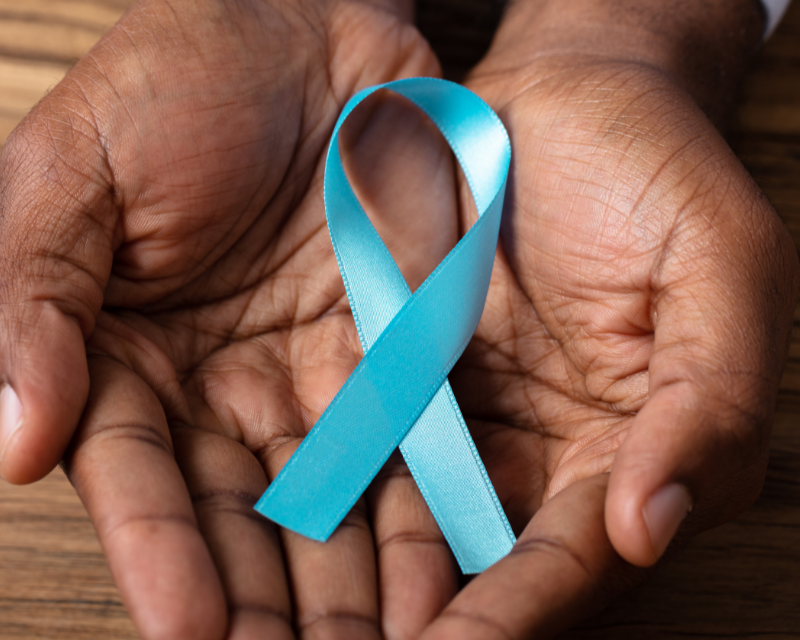
Since 2007, Polaris has operated the National Human Trafficking Hotline, a lifeline for thousands. But answering the call is more than answering the phone. It’s creating tools, programs, and resources that didn’t exist — because survivors told us what was missing. Together, we’re answering the call to prevent and end human trafficking with survivors leading the way.
This is the story of how survivors shaped a groundbreaking approach to justice — one that listens, protects, and disrupts trafficking at its source.
**********
“Why don’t they just leave?” It’s a question we hear often about adult victims of human trafficking, usually coming from a place of urgency and care. But it overlooks something essential: Leaving can be the most dangerous part of a trafficking situation.
That’s where safety planning comes in.
“All trafficking situations are dangerous in some way,” explains a specialist with the National Human Trafficking Hotline. “Safety planning is about helping someone in that situation think through how to protect themselves — physically, emotionally, and logistically — at every stage.”
Whether someone is considering taking a job that raises concerns, is actively trying to leave a trafficking situation, or has already exited but remains vulnerable, safety planning can be a lifeline.
And safety planning is not just for the person being trafficked. Family members, friends, and even coworkers sometimes reach out to the Hotline, worried about someone they know.
Every call is different, but every call is a chance to help someone take back control over their own safety. For the advocates answering the call, it’s not about rescuing — it’s about listening, guiding, and supporting what the survivor needs most.
Safety Isn’t Just Leaving — It’s Planning to Survive
One advocate remembers a survivor who texted the Hotline from a hotel room. She was in a trafficking situation and wanted help, but feared that involving law enforcement would escalate things with her trafficker. Instead, she asked to connect with a service provider who could help her leave safely and access shelter.
The Hotline team moved quickly but carefully, asking:
Is this a safe phone to text on? Where are you, and how long will you be there? Is it safe to leave on foot? Do you have access to transportation or money for a cab?
In this case, the survivor ultimately decided to ask a buyer for extra money to help her leave her trafficker. She called a cab herself. While she was en route, a Hotline advocate coordinated with a local service provider to meet her at a safe location.
Even in the safety of the car, she was overwhelmed. “I’m really scared,” she texted.
The advocate stayed connected with her as she practiced grounding exercises to regulate her nervous system so she could focus on what was next.
With the help of the Hotline advocate, she felt empowered to review the details of her specific situation, evaluate potential plans for leaving, and make an informed decision about how to proceed safely.
Answering the call in that moment meant holding space for fear and helping her find her footing one step at a time.
“We didn’t know what would happen after that,” the advocate reflected. “But safety planning with the Hotline helped her move one step closer to freedom.”
Sign up to learn more about human trafficking and how you can help
What Most People Don’t See About Leaving
Many people assume that once law enforcement is involved, the situation is resolved. But for adults, especially those who may lack stable housing or whose trafficking experience involves forced or coerced criminal activity, calling the police can complicate things.
Safety planning helps survivors weigh not just when to leave, but how to do so without creating new risks. For example, victims may not feel safe disclosing abuse in front of their trafficker. Or if law enforcement can’t act immediately, the risks to a victim can dramatically increase. And even when an intervention happens and they’re removed from their trafficker, survivors often lose access to critical resources: a place to sleep, a way to earn money, or documents that prove their identity.
“If you’re being trafficked in the middle of winter in Michigan,” one advocate noted, “you might stay because the alternative is freezing. That’s a survival decision.”
This is why safety planning asks: What would it take for you to leave — and to stay safe afterward?
Sometimes, that plan includes law enforcement. Since 2007, the Hotline has made more than 31,500 reports to law enforcement in situations where it was required or specifically requested — helping ensure safety while centering survivors’ voices and choices.*
Leaving Isn’t The Last Step
Safety planning isn’t only for people who are actively trying to leave. It’s also essential after someone has exited a trafficking situation, especially when their basic needs and legal status are still uncertain.
One group of survivors had been trafficked while working for a traveling carnival. They were brought to the U.S. on temporary work visas and forced to work 16-hour shifts, living in trailers with no running water or air conditioning. When one person was injured on the job, they weren’t allowed to seek medical care. The injury became permanent.
Months after leaving, they contacted the Hotline through their attorney. They were looking for recognition, validation, and support in the aftermath of their experiences. They had lost their income, their legal documents like IDs and visas, and their ability to return home. Still, they were determined to rebuild.
“They needed someone to listen,” one advocate recalled. “To say: You didn’t deserve that. And here’s what we can do to help.”
The Hotline team gathered reports from multiple concerned family members and agencies to document the full scope of what had happened. That information helped law enforcement and service providers respond with greater clarity. From there, the safety planning continued — focused on recovery: What do you need now? Where do you feel safe? What resources can help stabilize your future?
Why We Center the Survivor’s Voice
Hotline advocates know that survivors are the experts in their own lives. Every decision — whether to leave, stay, disclose, or act — is shaped by risk, timing, and survival.
“We trust the person in the situation to know it best,” said one specialist. “Our role is to ask the right questions, offer support, and make sure our partners — law enforcement, service providers, legal advocates — are prepared to respond when the time comes.”
That also means being honest. The Hotline can support people in the moment, provide referrals, and help coordinate, but advocates aren’t always involved long-term. Still, even a single conversation can shift the trajectory of someone’s life.
“People call us because they need help themselves or because they want to help others. And every time we answer the call, we do it with care, respect, and a deep belief in the survivor’s ability to choose their own path,” the specialist shared. “Sometimes we get to see the full story come together. Sometimes we don’t. But every call is a chance to help move someone closer to safety.”
*All communications with the Hotline are confidential, including contact information, unless the person reaching out: gives permission to share contact information, expresses threat to harm themselves or others, discloses information regarding the abuse, neglect, or trafficking of a minor, or reports a life-threatening emergency or imminent harm.
If you or someone you love are looking for safety planning resources, contact the Hotline or check out our resources online.
Help Us Keep Answering the Call
When someone calls the Hotline, what they hear on the other end can be life-changing.
– Learn more about the National Human Trafficking Hotline at humantraffickinghotline.org.
– Give today to help us support survivors, train partners, and ensure someone is always there to answer the call.
– Share this post to help others understand the power of safety planning.
Stop human trafficking today
Help fix the broken systems that make trafficking possible so we can prevent it from happening in the first place.



